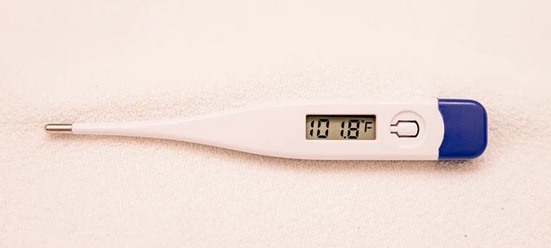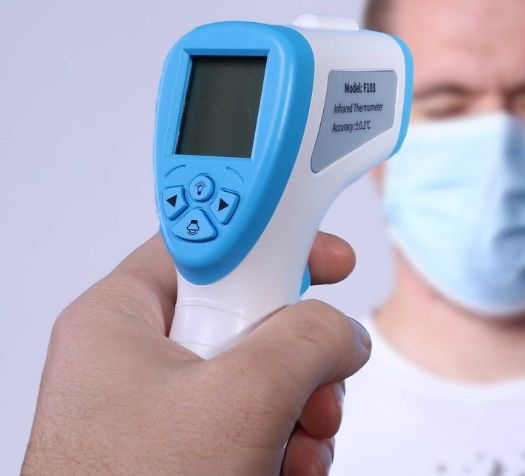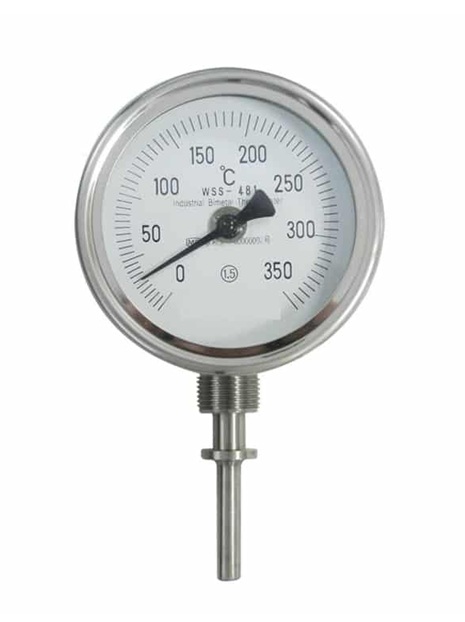Have you ever placed a thermometer under your tongue and wondered how that tiny device knows if you have a fever? Or checked the weather and thought about how scientists measure temperature so accurately? The answer lies in some fascinating science.
A thermometer works by detecting changes in heat. Heat causes substances to expand, change electrical properties, or emit invisible radiation—all of which can be measured and converted into a temperature reading. Whether it’s a traditional mercury thermometer, a modern digital one, or a high-tech infrared scanner, they all rely on the same fundamental principle: heat affects matter in predictable ways, and we can use those changes to measure temperature.
Let’s break it down and explore how different thermometers work.
What is Temperature?
Before we dive into how thermometers work, let’s first understand what temperature actually is.
Temperature is not just about feeling hot or cold—it’s a measure of how fast the tiny particles (atoms and molecules) in a substance are moving. When a substance heats up, these particles move faster. When it cools down, they slow down.
Think of it like boiling water: when the water is cold, the molecules move slowly. As you heat it, the molecules start bouncing around faster and faster until the water starts boiling. This movement of molecules is what thermometers measure in different ways.
Science Behind It: How Do Airplanes Fly?
How Different Thermometers Measure Temperature?
There isn’t just one way to measure temperature. Over time, scientists have developed several types of thermometers based on different scientific principles. Let’s explore some of the most common ones.
Mercury Thermometers

The classic thermometer with a thin glass tube and a red or silver liquid inside is called a liquid-in-glass thermometer. These use the principle of thermal expansion—the idea that substances expand when heated and contract when cooled.
The thermometer has a small bulb filled with either mercury (in older thermometers) or alcohol (in modern ones).
When the temperature rises, the liquid expands and moves up the narrow tube.
When the temperature drops, the liquid contracts and moves down.
The temperature scale on the glass tube shows the reading in degrees Celsius (°C) or Fahrenheit (°F).
Since mercury is toxic, most modern thermometers use alcohol, which is dyed red or blue for easy visibility. These thermometers are great for measuring body temperature, room temperature, and even weather conditions.
Digital Thermometers

Digital thermometers are much faster and more precise than traditional ones. They work using an electronic component called a thermistor, which changes its resistance to electricity when the temperature changes.
The thermistor inside the thermometer detects how much electricity can pass through it.
When the temperature rises, the electrical resistance changes.
A tiny computer inside the thermometer calculates the temperature based on this resistance and displays it on the screen.
This method is highly accurate and quick, which is why digital thermometers are commonly used in medicine, cooking, and environmental monitoring.
Infrared Thermometers

Ever seen a thermometer that can check body temperature without even touching you? That’s an infrared thermometer. Instead of measuring expansion or electrical resistance, it detects the infrared radiation (heat energy) that all objects emit.
Every object emits infrared radiation—hotter objects emit more. The thermometer has a special sensor that picks up this radiation. The sensor converts the infrared energy into a temperature reading.
This is why infrared thermometers are used in fever screening, food safety, and industrial applications—they can measure temperature instantly from a distance.
Bimetallic Strip Thermometers

Another fascinating type of thermometer is the bimetallic strip thermometer, which works by using two different metals that expand at different rates when heated.
Two metals (like iron and brass) are joined together in a strip. When the temperature rises, one metal expands more than the other, causing the strip to bend. This bending motion moves a needle on a dial, showing the temperature.
These thermometers are commonly found in oven dials, refrigerators, and industrial machines.
Science Behind It: Why Sky Is Blue?
Conclusion
Thermometers have come a long way from simple glass tubes to high-tech digital and infrared devices. Today, we even have smart thermometers that connect to mobile apps, wearable sensors for continuous body temperature monitoring, and advanced space thermometers that can measure the temperature of stars and planets millions of miles away. So, the next time you check your body temperature or look at a weather forecast, remember the incredible science behind that little gadget! That’s all in Science Behind it today.
Comments
All Comments (0)
Join the conversation